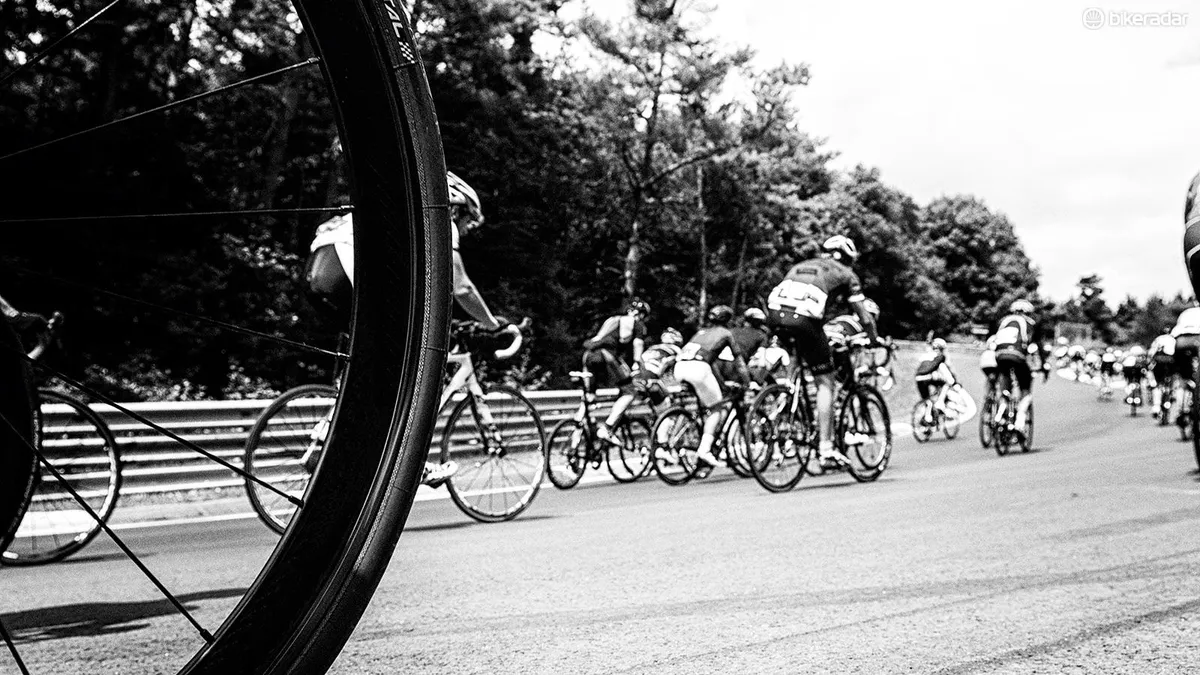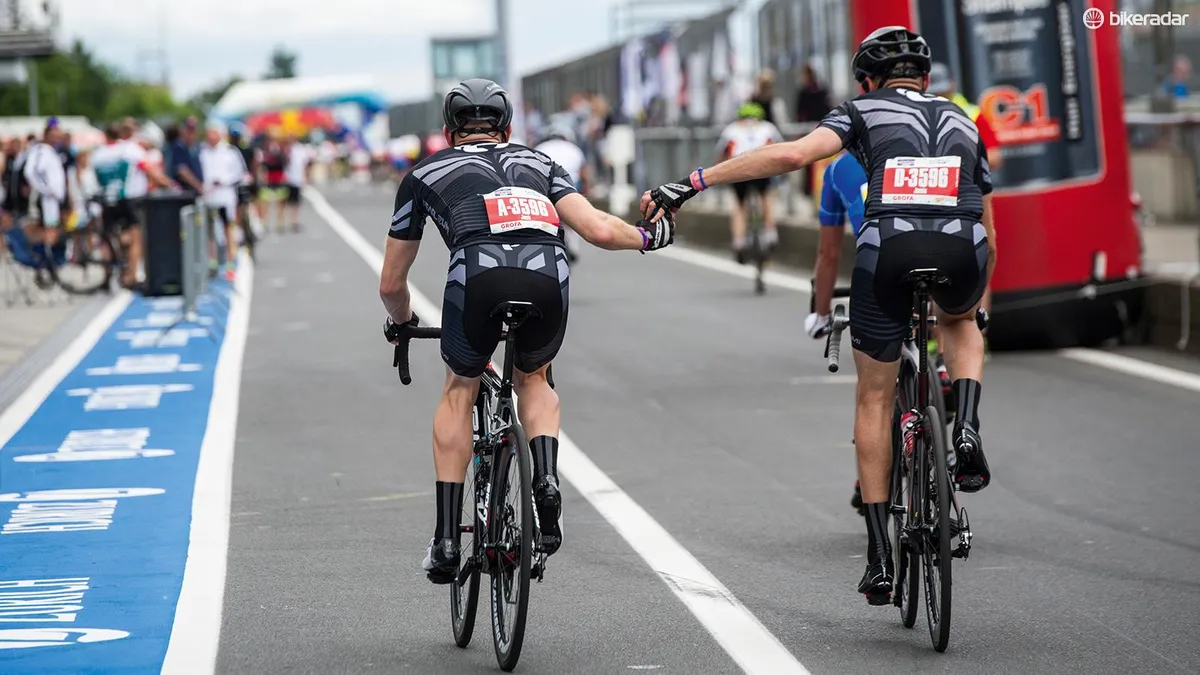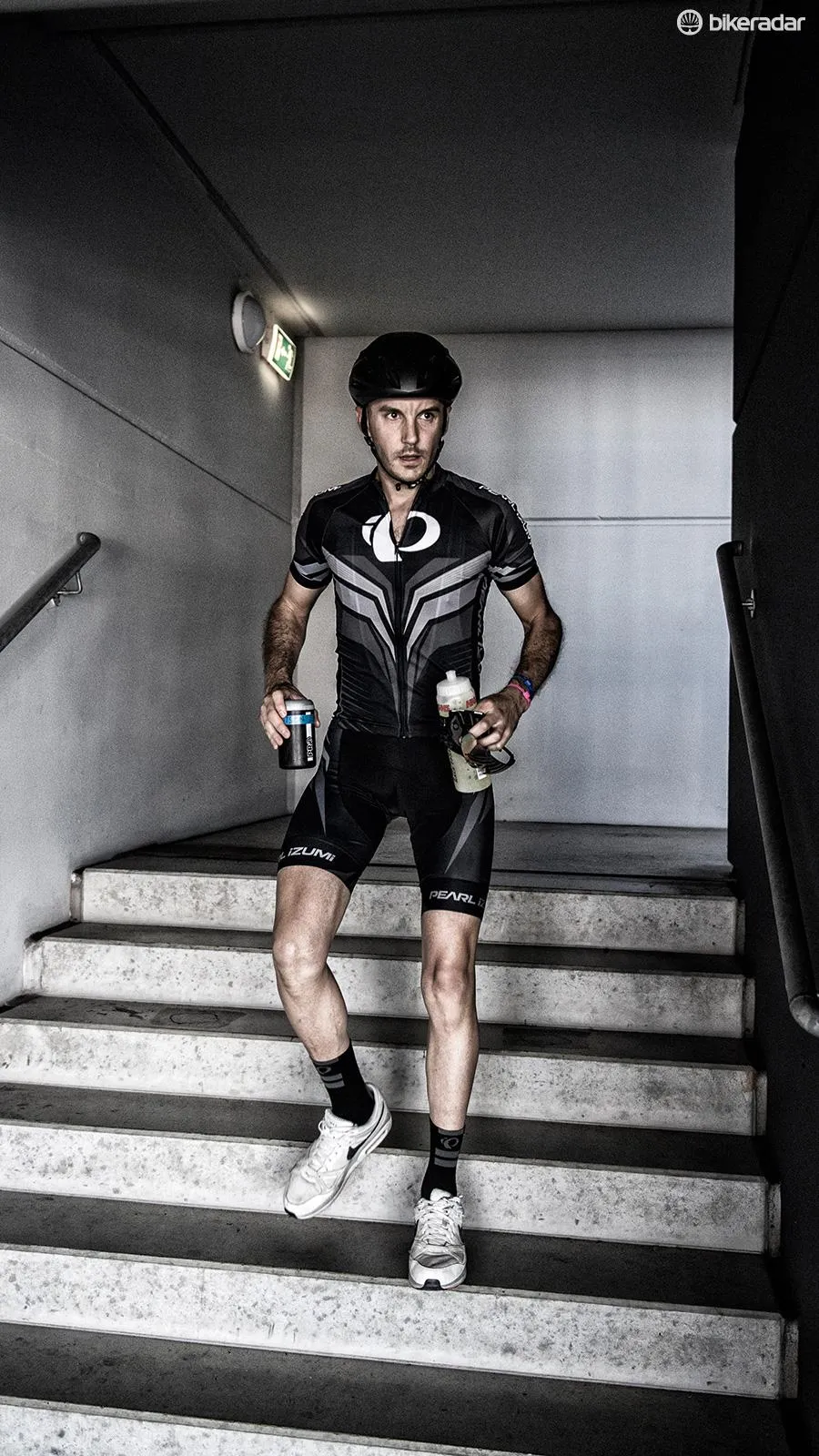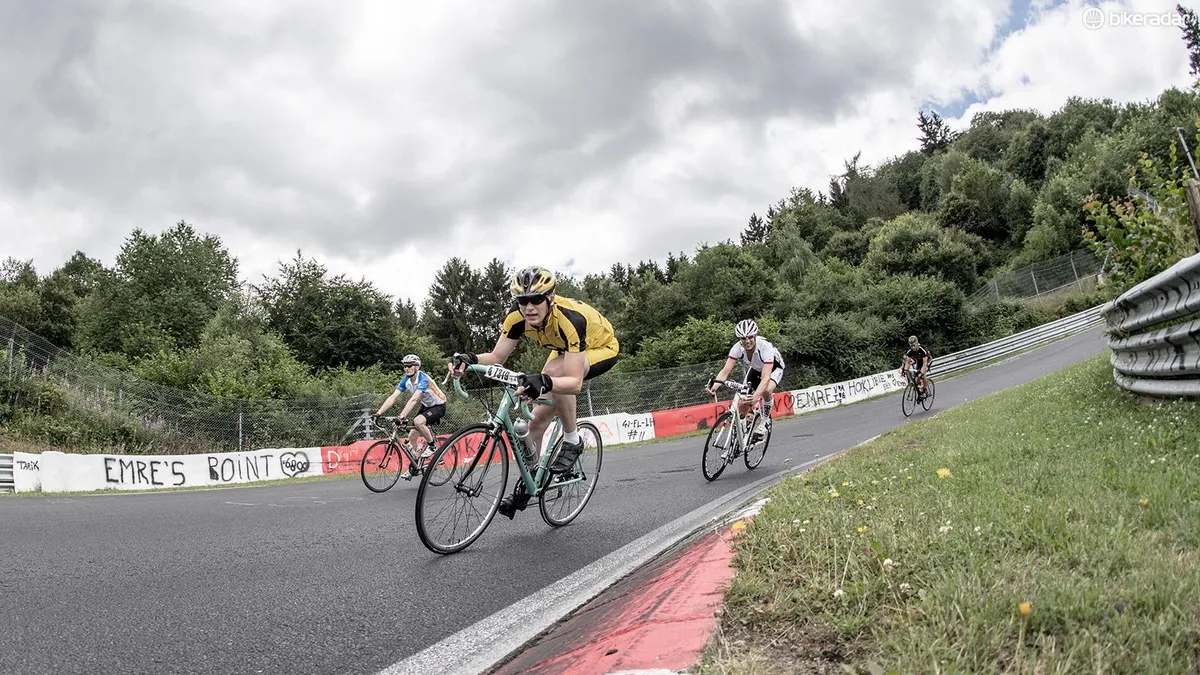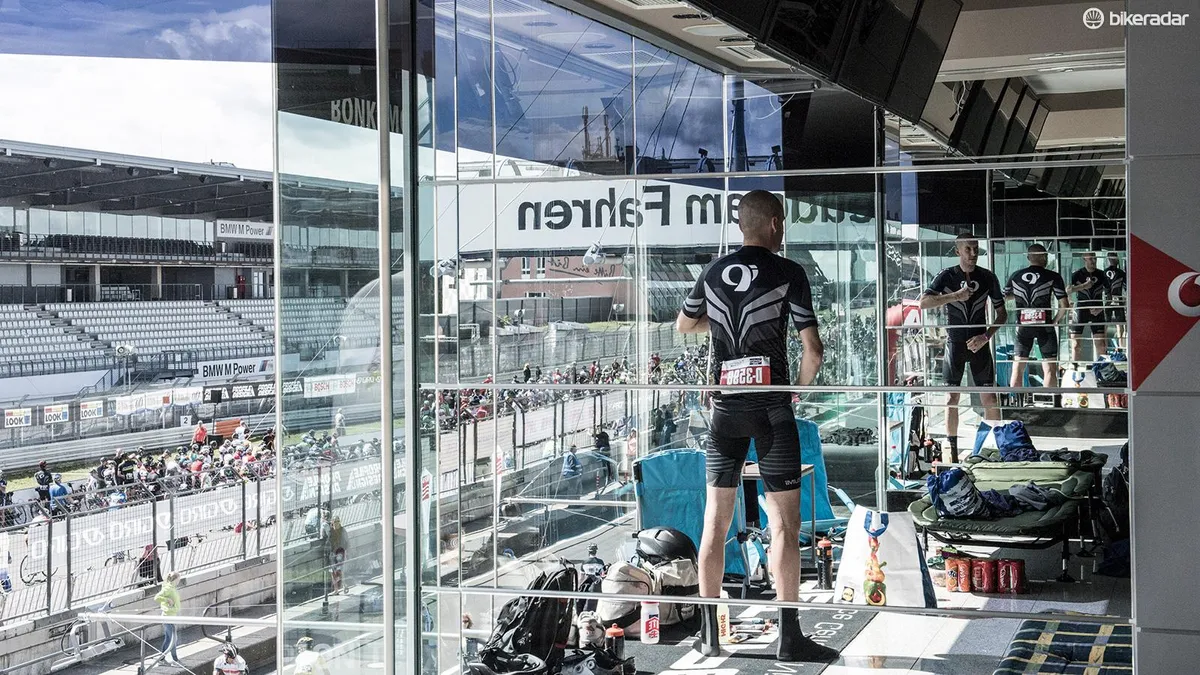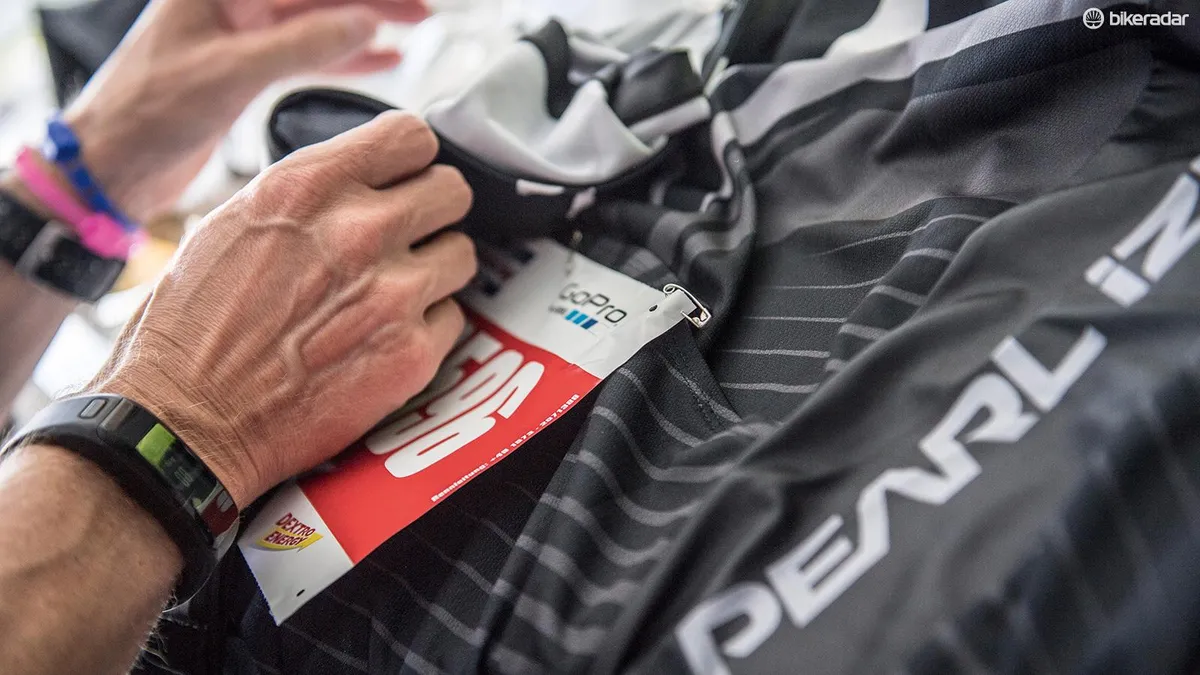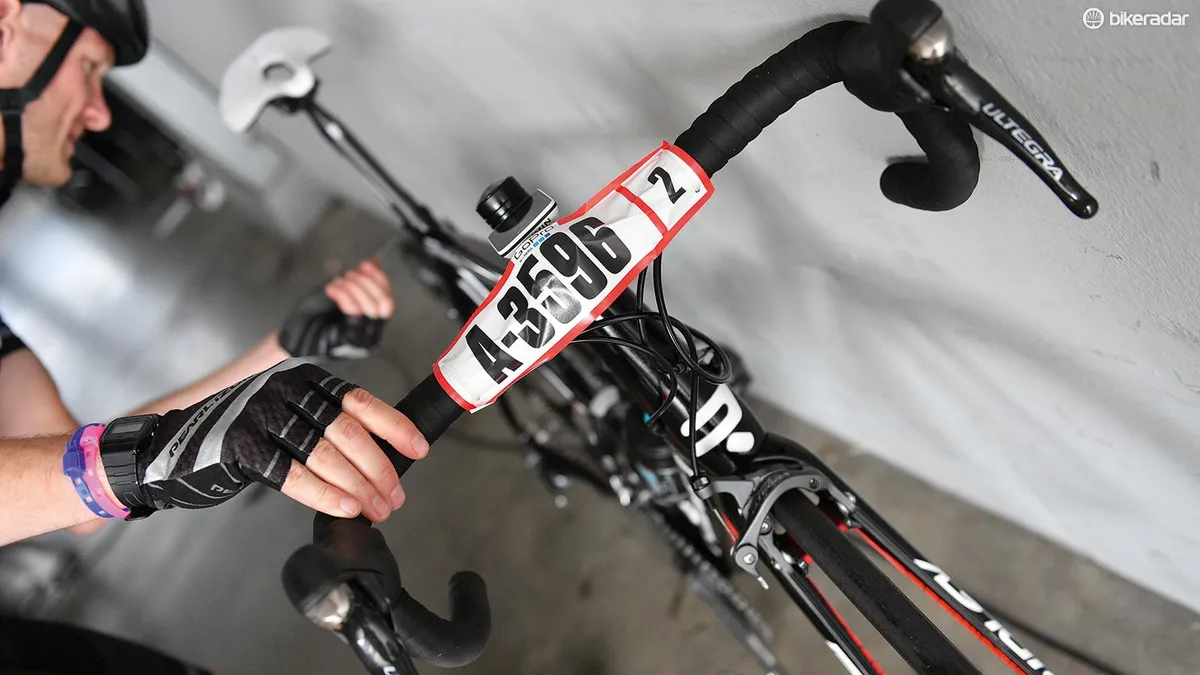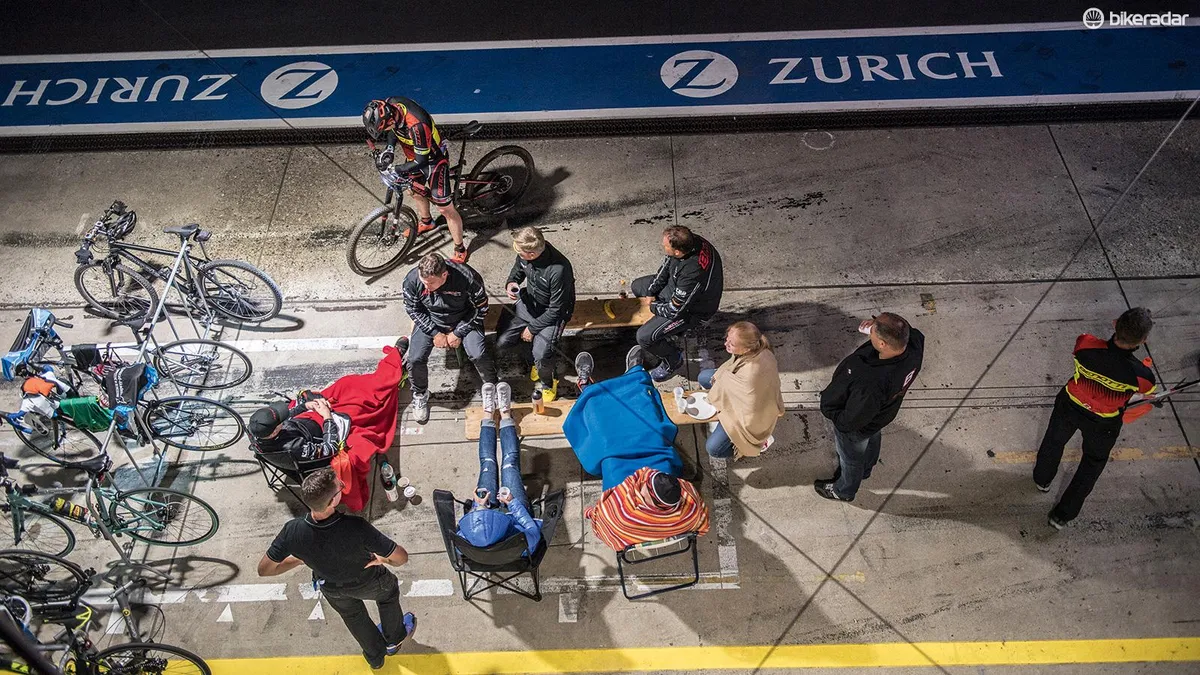Jamie Wilkins gets to know the Rad am Ring by bicycle in a four-man team taking on the 24-hour race around the infamous Nürburgring racing circuit in Germany.
- Ridley Noah SL Disc first ride review
- How to ride your first century, double century, or longer ride in 2017
While not well known in the UK, Rad am Ring is a weekend-long festival of cycling with 5,500 competitors and hundreds more supporting, spectating, enjoying the atmosphere and running the expo and bike demos. Loads of races run simultaneously; the main event is the 24-hour road race for solo riders or teams of two, four or eight, for men, women or mixed. Then there are shorter races of 25, 75 and 150km, a one-lap time trial on the Friday evening to kick things off and a pro race on the Sunday afternoon to wrap it all up. The mountain bike version of the 24-hour race shares some of the road course and then dives off into the Black Forest.
The star of the show is the Nordschleife circuit. Nicknamed the Green Hell by Formula One legend Jackie Stewart after he won there in 1968, it stands like a Colossus over the event. The course combines the modern F1 circuit with the old Nordschleife (the N24 layout, motorsport geeks) to make a 15-mile lap with 1,500ft of climbing, the majority of it coming in the middle of the lap and crowned with the nefarious 20 percent ramp of Hohe Acht.
We were invited to join distribution company Madison to make a four-man team. Profile Design, one of Madison’s longterm partner brands, is the main sponsor of the event and has entered several times before. Their two riders would be Jim McConnel and Peter Slijkhuis, both RAR veterans and elite level athletes; last year their team finished 13th out of 500-plus. In the absence of volunteers from the office, I messaged my good friend, training buddy and sometime time trial rival Dave Janes. He sent back an emphatic ‘YES!’ within seconds.
- The course: Rad am Ring, 466 miles around Germany's Nürburgring circuit
- The horse: Ridley Noah SL with Profile Design Twenty-Four 58 wheels, Light & Motion Urban 800 lights
- The equipment goal: To ride the 24-hour team race

We arrive in Germany after an 11-hour journey and with no time for a warm-up before the time trial our legs feel wooden, so we’re grateful that, bar a few small lumps, the first five miles are downhill. Much of it is really fast, consistently over 40mph and well over 50 on the plunge down into the ‘Foxhole’ section.
At these speeds some of the corners require a perfect racing line and real commitment to stay off the brakes. It’s as thrilling as the subsequent long climb is painful. With most of the top-50 on TT bikes, Dave and I are pleased to finish 18th and 13th respectively on the Ridley Noah SL road bikes we’ll use all weekend.
Over dinner, we talk tactics. Jim and Peter know the race and have the strategy prepared. We’ll do two rounds of single laps, then two rounds of double laps in the night to give everyone more rest, then single laps to the finish. I’ll take the first leg.
Race day
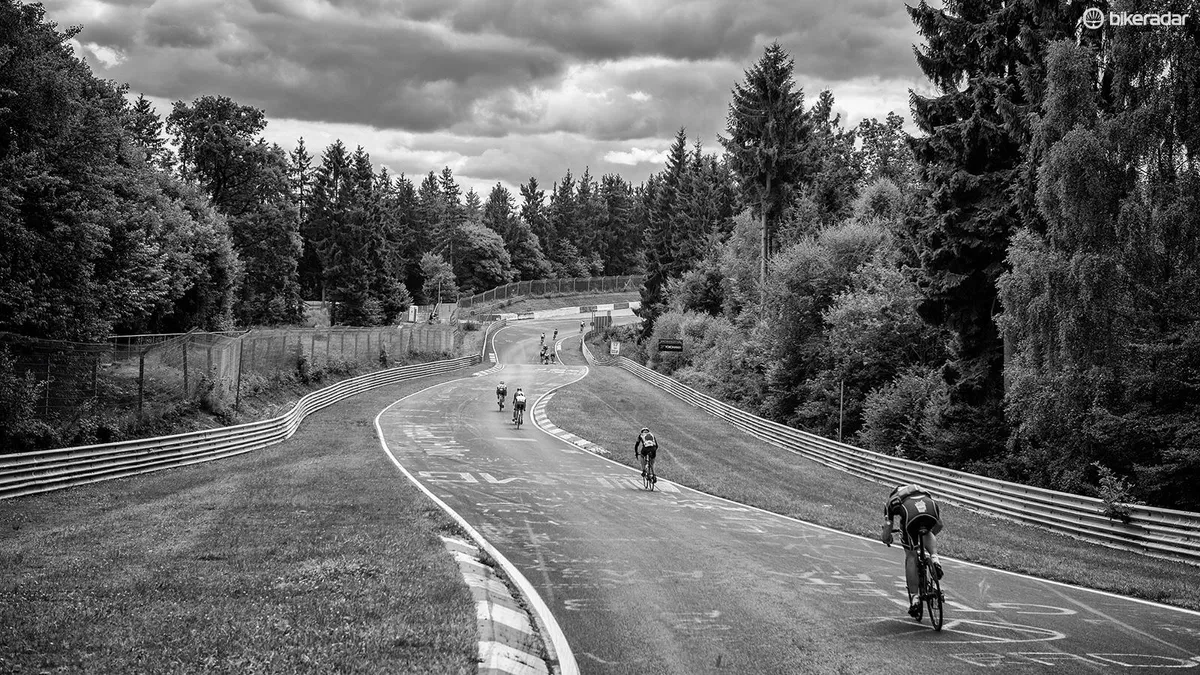
Next morning, thousands of riders are lined up on the F1 track’s grid. There are lots of races starting with just a few minutes between them and it’s near impossible to find out where to go so I’m paranoid about starting in the wrong wave and getting us disqualified. I finally find my position, get away well with shouts from the team, and set about chasing up to the lead group.
Dave comes in after riding his second lap nearly as hard as his first and deadpans, “This is going to get hard, isn’t it?”
Everyone seems frantic and on just the second corner there’s a crash, with a bike bouncing at head height. I reach the leaders by the time we join the old circuit and a few miles later I push into the race lead, just for fun! From there it’s a long climb and I lose touch with the front half-dozen riders when they accelerate again, my Garmin is already showing 380W.
One of the funny things about a team 24-hour event is that everyone has to go through that over-excited first stint, so for three hours the track is full of giddy riders going out too hard.
Like most teams, our timing chip is in a bottle carried in the second cage, enabling efficient rolling changes. I pass it to Dave, who hammers around the lap almost as hard as in the previous night’s TT. Dave hands over to Peter, who sprints down the pit lane like a greyhound. Jim flies around, too, and my second lap is upon me all too quickly.
By now teams are more spread out and I ride most of the lap alone. Because the circuit descends so fast and then climbs for so long, there’s less advantage to working with others, though that doesn’t stop slightly slower riders from trying to jump on your wheel. Sharing the work on the flatter sections is one thing, especially when there’s a sense of camaraderie, but when they refuse to come through, usually declaring the wheelsuckers’ motto – ‘Sorry, I can’t’ – before magically finding some power when you put in a dig, that’s just rude. The only exceptions are for the mountain bikers. If you can hold the wheel at 25mph on a mountain bike, ‘hat’ to you.
Feeling the burn
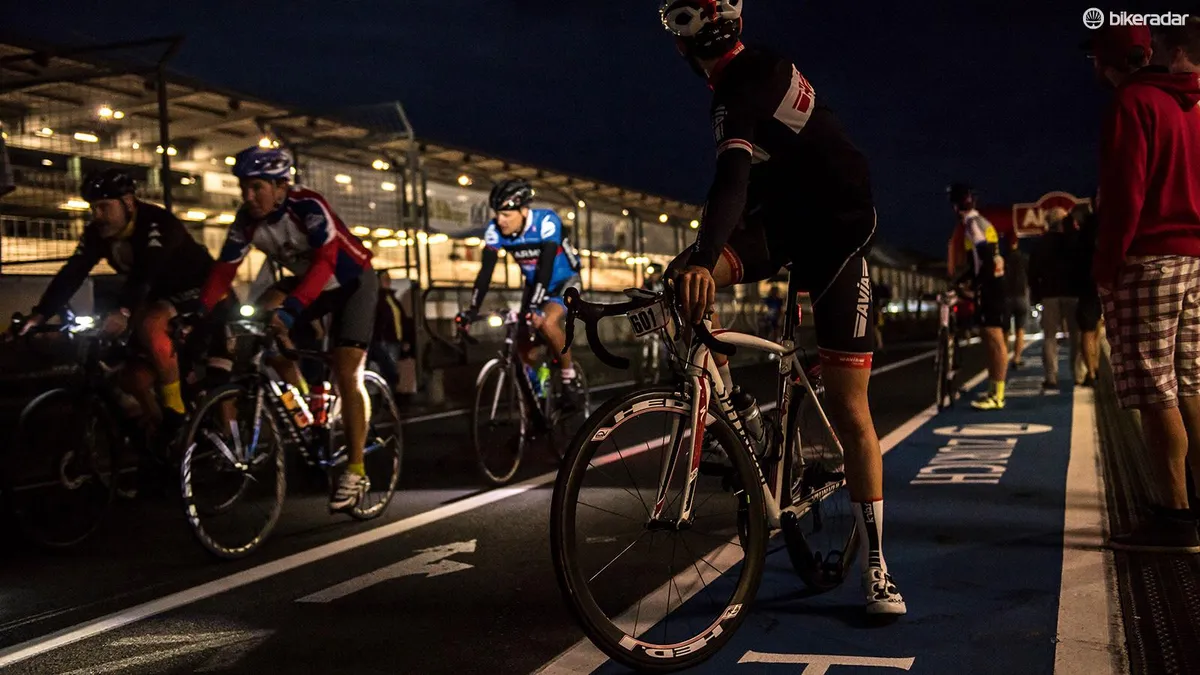
Dave comes in after riding his second lap nearly as hard as his first and deadpans, “This is going to get hard, isn’t it?” Right at that moment, Peter is on the track and digging far too deep to take turns with Dutch former professional Léon Van Bon, a lap he later declares is his highlight of the whole event.
The first stint after dawn feels like we’re almost there. A bonus for tired legs is that the race is what’s known as a ‘short 24’
The double stints are tough but the two four-hour breaks are appealing, especially with a quiet hotel room less than 100m from the circuit. We’re all suffering after the first round of doubles. Dave and I are tired, Peter says he’s really flagging and Jim’s hamstring is hurting him, with his Garmin Vector 2 power meter showing that it’s badly skewing his left/right split. We consider changing the stints so that he and Peter only do one double but Dave and I know that we need to rest if we’re going to perform in the morning. That makes it all the more frustrating when neither of us can sleep, despite three hours of racing and avoiding caffeine.
I head out for my second double at 12.30am and the night riding is incredible. As you look one way and then the other, the circuit is a near constant stream of white and red lights. The huge campsite around the F1 circuit has come to life, too. People sit next to barbecues and fire pits. Some have strobe lights marking their position for teammates, some are playing music, and we race right through it. Rad am Ring isn’t just about the racing, for some it’s about the atmosphere and the taking part.
The old Nordschleife (literally, Northern Loop, there used to be a southern one, too) is a different matter — it’s pitch black. Thankfully our Light & Motion Urban 800 lights give plenty of visibility to take the descents and corners at the same speed as in the day and — perhaps even more so than our fast 58mm Profile Twenty-Four wheels or ultra-low resistance tyres — they turn out to be genuine advantages as those with weaker lights have to slow. I set my fastest time on the descent at 1.30am.
I hand over to Dave at 2am, perhaps the worst shift of all. This time I sleep like a log and feel surprisingly refreshed. Drawing on decades of top level experience, Peter and Jim both recover incredibly well for their second doubles, so much so that I’m caught out when Jim arrives in the pits earlier than expected. It only costs us two minutes but I kick myself.
A new dawn, a new day
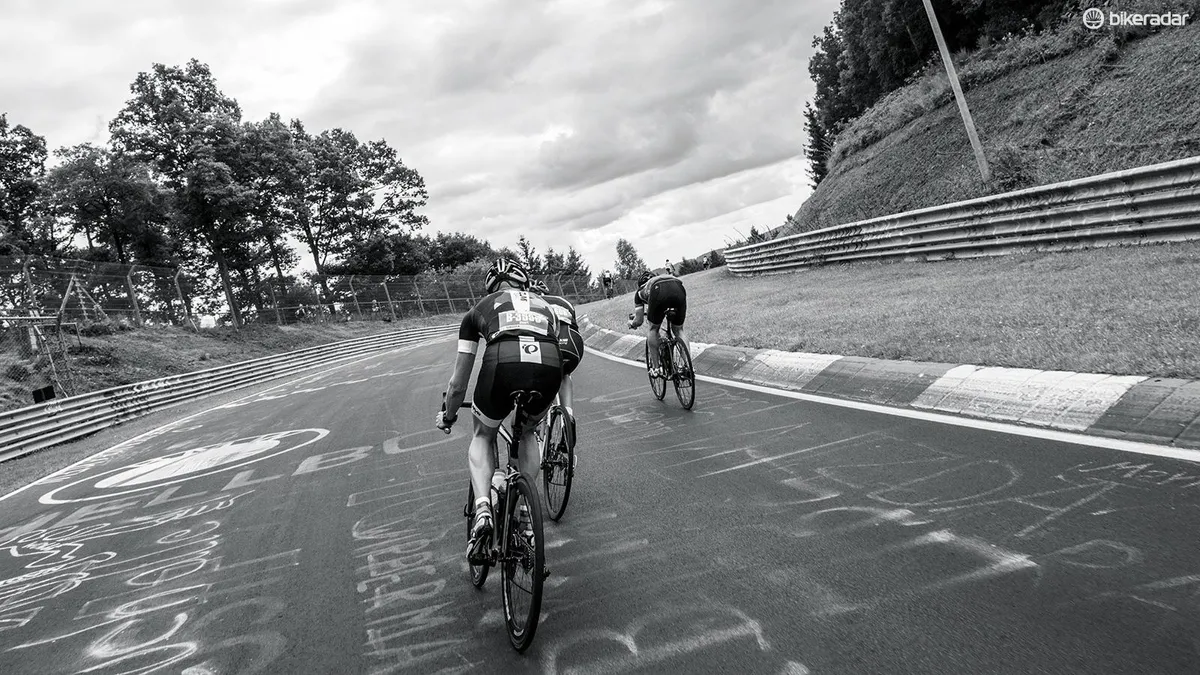
The first stint after dawn feels like we’re almost there. A bonus for tired legs is that the race is what’s known as a ‘short 24’ because the chequered flag comes out when there isn’t time to do another full lap. In a ‘long 24’ your last lap starts when the whole 24 hours have passed.
The chequered flags come out during Dave’s lap so we all crowd onto the trackside barriers to wait for him
We work out that Dave will take the finish so Peter is the first to complete his riding and comes into our lounge area — one sixth of a small hospitality suite above the pits — looking like he’s used every last joule of energy. Jim follows and when I catch sight of him approaching as I wait in the pits, he’s smashing up the pit road out of the saddle.
Our last laps have an end-of-term feel. After more than five hours each of carefully paced racing, now we can give it everything. The problem is, while we’ve fuelled and rested our bodies, our minds are still tired and mistakes occur. A few miles into my final circuit I touch a wheel and have a stupid crash when the rider in front of me stands lazily and shoots his bike backwards. It was my fault, but in scores of road races I’ve never overlapped a wheel like that. I jump back on, pass him on the climb and apologise for riding into him. Dave has a similar experience, blasting out of the pits before dropping his chain with a scrappy shift, then slicing his finger getting it back on.
The chequered flags come out during Dave’s lap so we all crowd onto the trackside barriers to wait for him, and he high-fives us on his way to the line. We collect our medals, which likely cost about 10 pence each but will be valued as if they bore Olympic rings.
We have finished 12th overall out of 575 four-man teams and we’re fourth in the Masters 1 age group. The winners were two laps and 28 minutes up on us, or two hours ahead effectively, and eight minutes clear of second having been glued together for much of the race.
With a long drive ahead there isn’t much time for celebrating but after hugs all round we agree that we’d do this again in a blink. If you’ve done L’Étape du Tour, Haute Route and London-Paris but you’ve never done a team 24-hour race, put this one on your list. It’s one of the great cycling experiences.
